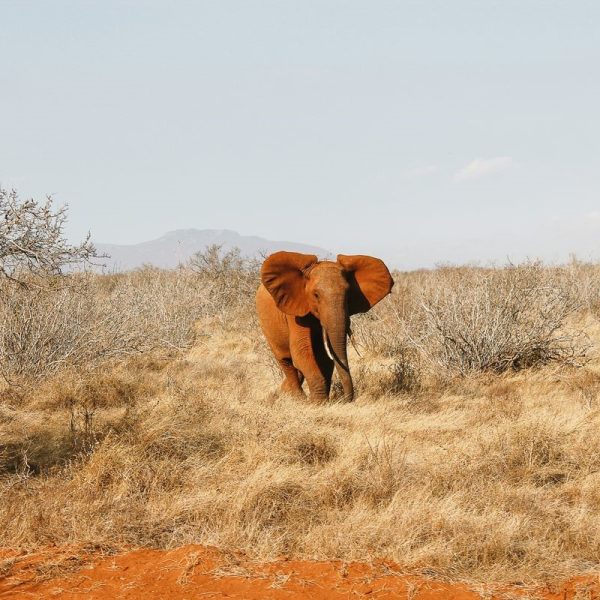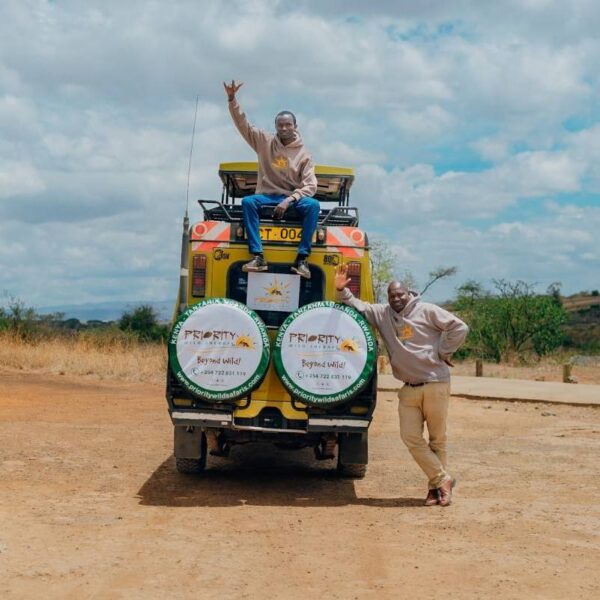Kenya vs. Tanzania: Planning an African safari and caught in the great debate between Kenya and Tanzania? You’re not alone. These East African powerhouses are among the world’s top safari destinations, famed for their abundant wildlife, breathtaking landscapes, and rich cultural heritage. Whether your dream is to witness the Great Migration, spot the legendary Big Five, or take in iconic views of Mount Kilimanjaro and the Ngorongoro Crater, both Kenya and Tanzania offer once-in-a-lifetime experiences. But choosing the right destination ultimately comes down to your travel style, interests, and expectations.
This comprehensive guide compares Kenya and Tanzania safaris across multiple dimensions—from wildlife viewing and landscapes to logistics and cultural depth—to help you decide where your African safari dreams can best come to life.
Why Go on Safari in Kenya or Tanzania?

Kenya and Tanzania stand out as premier African safari destinations for their immense biodiversity and dramatic scenery. Both countries boast an array of national parks and reserves that are teeming with wildlife and showcase East Africa’s incredible natural beauty. Whether it’s the golden plains of the Serengeti, the rolling savannahs of the Masai Mara, or the volcanic landscapes of the Great Rift Valley, these regions provide unparalleled access to Africa’s raw and untamed wilderness.
Kenya and Tanzania also excel in offering immersive safari experiences. Their safari infrastructure is well-developed, combining expertly guided game drives with luxurious or rustic accommodations that bring you close to nature without compromising comfort. Whether you’re a first-time safari-goer or a seasoned wildlife enthusiast, these countries offer tailor-made adventures for every traveler.
Big Five Safaris and Wildlife Viewing
Wildlife encounters are at the heart of any safari, and both Kenya and Tanzania deliver phenomenal game viewing. From elephant herds in Amboseli to elusive leopards in the Serengeti, every day on safari reveals new surprises. Lions, rhinos, buffaloes, cheetahs, giraffes, and countless other species roam freely across these regions, offering rich photographic and educational opportunities.
The Big Five—lion, leopard, elephant, rhino, and buffalo—can be found in both countries, often within a single game drive. Kenya’s Masai Mara and Tanzania’s Serengeti are particularly famous for their density of predators, while other parks like Lake Nakuru and Tarangire provide diverse wildlife ecosystems with fewer crowds.
The Great Migration: Earth’s Greatest Wildlife Spectacle
The annual Great Migration is one of the most dramatic natural events on the planet, and it plays out across both Kenya and Tanzania. Over two million wildebeest, zebras, and gazelles journey across the Serengeti and into the Masai Mara in search of fresh grazing lands. This epic trek is filled with suspense, from perilous river crossings to predator ambushes that unfold right before your eyes.
Tanzania offers a longer stretch of the migration, particularly during the calving season from January to March in the southern Serengeti, where thousands of newborns attract high predator activity. Kenya, on the other hand, is prime for witnessing the thrilling river crossings from July to October, especially in the Mara River region. Both countries grant you front-row seats to one of nature’s greatest shows.
Lodges, Camps, and Safari Style
Safari accommodations in Kenya and Tanzania range from ultra-luxurious lodges with infinity pools and spa services to authentic, eco-friendly tented camps nestled deep in the bush. Both countries offer options that suit various preferences, whether you seek indulgent comfort or a more adventurous experience close to nature.
Many lodges are strategically located in private conservancies or remote areas of national parks, allowing for exclusivity, off-road game drives, and intimate wildlife encounters—sometimes right from your veranda. Whether waking up to the roar of lions or enjoying sundowners under a star-filled sky, the accommodations are a key part of your safari journey.
Safari for Families, Honeymooners, and Solo Travelers
Kenya and Tanzania cater to a wide spectrum of travelers. Families can enjoy kid-friendly safaris with interactive activities and guided nature walks. Couples can indulge in romantic getaways that include private dinners in the wild or hot-air balloon safaris over golden plains. Solo travelers can find community and comfort in small group tours or private itineraries with expert guides.
Custom experiences such as cultural village visits, bush breakfasts, and evening sundowners enrich the safari beyond game viewing. These personalized touches ensure that every traveler—regardless of age or interest—can create meaningful memories that go beyond the expected.
Travel Logistics and Accessibility
Kenya holds an edge in accessibility and logistical ease. Jomo Kenyatta International Airport in Nairobi is a major hub with extensive international connections, and many of the country’s top parks like the Masai Mara, Amboseli, and Tsavo are reachable by road or short domestic flights. This makes Kenya an attractive choice for travelers seeking shorter itineraries or easy transitions between destinations.
Tanzania, while incredibly rewarding, may require more planning. Most northern safaris begin via Kilimanjaro International Airport near Arusha, while those venturing to the southern circuits use Dar es Salaam. Remote parks often require connecting domestic flights and longer travel times. However, this added effort is often rewarded with less-crowded parks and a sense of untouched wilderness.
Iconic Parks and Stunning Landscapes
Kenya and Tanzania are home to some of Africa’s most iconic landscapes and national parks. In Kenya, the Masai Mara is world-renowned for its predator activity and migration crossings. Amboseli is famed for its elephants and majestic views of Mount Kilimanjaro, while Lake Nakuru dazzles with its flocks of flamingos and rhinos.
Tanzania’s Serengeti, with its endless plains and predator-prey drama, embodies the quintessential African safari. The Ngorongoro Crater, a UNESCO World Heritage Site, offers a stunning natural amphitheater teeming with wildlife. Parks like Tarangire and Lake Manyara provide a more secluded experience, rich with birdlife and varied ecosystems.
From Bush to Beach: Extend Your Adventure
An East African safari doesn’t have to end with the last game drive. Kenya and Tanzania both offer stunning beach extensions that combine adventure with relaxation. Kenya’s Diani Beach, Watamu, and Lamu are perfect for unwinding beside turquoise waters, exploring coral reefs, and experiencing Swahili coastal culture.
Tanzania’s Zanzibar Island is another idyllic post-safari retreat, known for its white-sand beaches, spice farms, and the historic charm of Stone Town. This seamless blend of bush and beach allows travelers to round off their trip in style, making the most of their East African journey.
Cultural Connections and Local Experiences
Culture plays an integral role in the safari experience. In Kenya, travelers can connect deeply with Maasai and Samburu communities, learning about traditional customs, dances, and daily life through village visits and cultural centers. These interactions are often included as enriching extensions to game drives.
Tanzania offers similar opportunities, especially around the Serengeti and Ngorongoro regions. However, it goes a step further with cultural excursions on Zanzibar Island, where Swahili heritage, spice tours, and ancient architecture provide a broader cultural perspective.
When to Go: Best Safari Seasons
Timing your safari is essential to getting the most from your trip. Kenya’s peak season runs from July to October, aligning with the Great Migration and dry, cool weather—ideal for wildlife spotting. Tanzania offers two prime windows: January to March for the calving season, which brings intense predator action, and June to October for general migration and dry-season game viewing.
Whichever country you choose, booking your safari at least six to twelve months in advance during high season is recommended to secure your preferred lodges and guides.
| Country | Best Time to Visit | Wildlife Highlights | Weather |
| Kenya | July to October (Dry season & Migration) | Great Migration, Big Cats | Dry, cool |
| Tanzania | January to March (Calving Season), June to October (Migration) | Predator action, scenic drives | Dry, warm |
The Conclusion: Kenya or Tanzania?
If you’re seeking a budget-friendly safari with shorter travel distances and excellent wildlife sightings, Kenya may be the better fit. It’s particularly appealing for those on tighter schedules or traveling with families. On the other hand, Tanzania is perfect for travelers looking for expansive wilderness, a more immersive experience, and the option to combine safari with a Zanzibar beach escape.
Both destinations offer unforgettable adventures. The choice isn’t about which country is better overall—but which one is better for you.
You Can’t Go Wrong
In the Kenya vs. Tanzania safari debate, there truly is no wrong choice. Whether you’re chasing the Great Migration, standing in awe at the foot of Kilimanjaro, or exploring the timeless landscapes of the Serengeti and Masai Mara, both countries offer an African safari experience that is authentic, exhilarating, and deeply moving.
Let Priority Wild Safaris help you craft the perfect itinerary—tailored to your interests, budget, and timing—so you can experience the magic of Africa in a way that’s personal and unforgettable.



